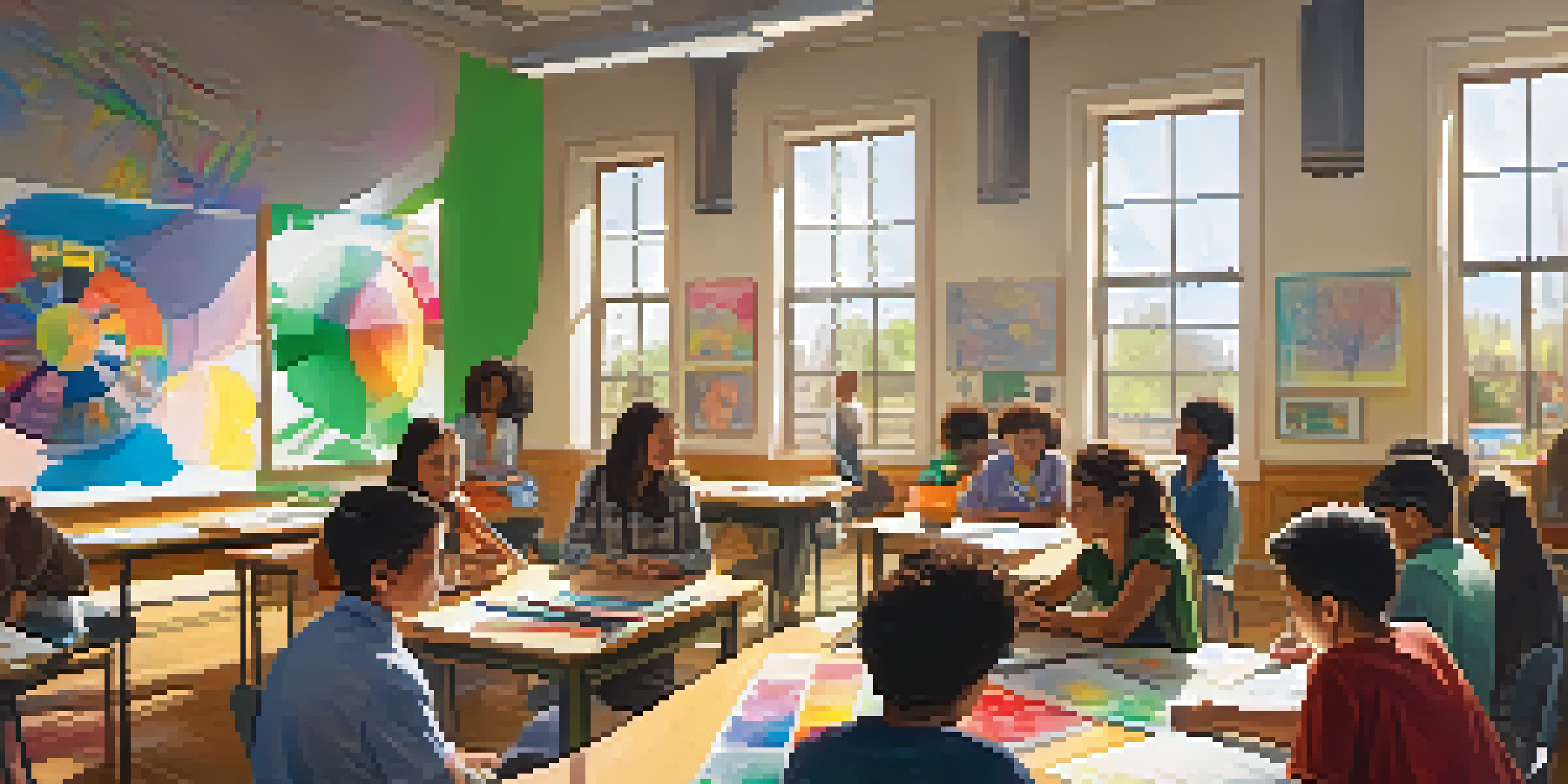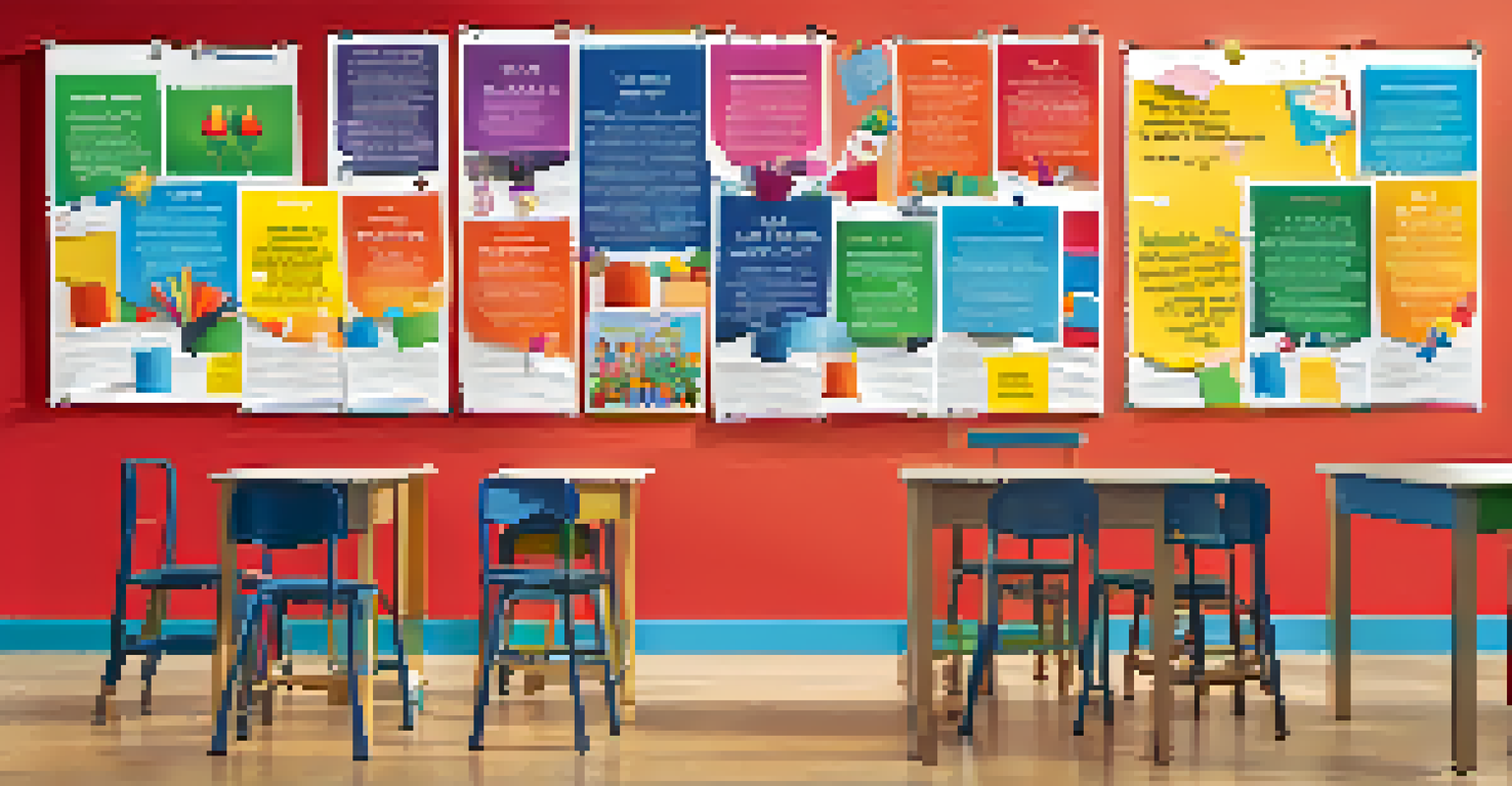Cognitive Behavioral Techniques for Enhancing Creativity in Students

Understanding Creativity and Its Importance for Students
Creativity is more than just artistic expression; it's a vital skill that enhances problem-solving, critical thinking, and innovation. For students, nurturing creativity can lead to greater engagement in learning and a deeper understanding of complex concepts. By fostering a creative mindset, students can approach challenges with fresh perspectives, making them more adaptable and resourceful in their studies and future careers.
Creativity is intelligence having fun.
However, many students face mental blocks that hinder their creative potential. Stress, anxiety, and self-doubt can stifle imaginative thinking, making it essential to address these barriers. This is where cognitive behavioral techniques come into play, providing practical strategies to help students unlock their creative potential and overcome obstacles.
Incorporating creativity into education also prepares students for a rapidly changing world. As industries evolve, the ability to think creatively is increasingly sought after. Therefore, enhancing creativity is not just beneficial for students' immediate educational experience, but also for their long-term success.
Introduction to Cognitive Behavioral Techniques (CBT)
Cognitive Behavioral Techniques, or CBT, are psychological strategies designed to change negative thought patterns and behaviors. These techniques encourage individuals to identify and challenge unhelpful beliefs, paving the way for more constructive thinking. By applying CBT, students can develop a growth mindset, which is crucial for fostering creativity.

At its core, CBT helps students reframe their thoughts about challenges and failures. Instead of viewing a setback as a dead end, students learn to see it as an opportunity for growth and exploration. This shift in perspective can invigorate their creative thinking and motivate them to experiment and take risks.
Creativity Boosts Student Success
Nurturing creativity enhances problem-solving and adaptability, preparing students for future challenges.
While CBT is traditionally used in therapy, its principles can be easily adapted for educational settings. Teachers and parents can introduce simple CBT techniques that encourage students to articulate their thoughts, recognize their emotions, and replace negative self-talk with positive affirmations.
Identifying Negative Thought Patterns
The first step in applying CBT is to help students identify their negative thought patterns. These might include beliefs like 'I'm not creative enough' or 'I always fail at projects.' By recognizing these thoughts, students can begin to understand how they limit their creative expression. Keeping a thought journal can be a helpful tool for students to track these patterns.
The greatest danger in times of turbulence is not the turbulence; it is to act with yesterday's logic.
Encouraging students to question these thoughts is crucial. For instance, asking them to consider the evidence behind their beliefs can lead to profound realizations. Often, students find that their fears are exaggerated or unfounded, which can free them from self-imposed limitations.
Once students identify these negative thought patterns, they can work on challenging and reframing them. This not only enhances their creativity but also builds resilience, allowing them to face future challenges with a more positive outlook.
Reframing Failure as a Learning Opportunity
One of the key aspects of enhancing creativity through CBT is reframing failure. Rather than seeing mistakes as a reflection of their abilities, students can learn to view them as valuable learning experiences. This perspective shift encourages experimentation and risk-taking, essential components of the creative process.
Teachers can facilitate this reframing by sharing stories of famous innovators who encountered failures on their paths to success. For instance, many well-known artists and scientists faced numerous setbacks before achieving their breakthroughs. These anecdotes serve to normalize failure and inspire students to persevere.
CBT Helps Overcome Mental Blocks
Cognitive Behavioral Techniques empower students to identify and reframe negative thoughts that hinder creativity.
Additionally, creating a classroom culture that celebrates effort and creativity, rather than just results, can significantly impact students' willingness to explore new ideas. When students feel safe to express themselves without fear of judgment, their creativity can flourish.
Practicing Mindfulness to Enhance Creativity
Mindfulness is a powerful cognitive behavioral technique that can enhance creativity in students. By practicing mindfulness, students learn to focus on the present moment, reducing anxiety and mental clutter. This clarity can lead to more innovative and spontaneous thinking.
Activities like deep breathing exercises, meditation, or mindful observation can help students develop this skill. For example, a simple exercise might involve students spending a few minutes observing their surroundings and describing what they see. This practice not only calms the mind but also encourages them to notice details they might otherwise overlook.
Incorporating mindfulness into daily routines can lead to a more relaxed and open mindset, allowing creativity to flow more freely. As students become more attuned to their thoughts and feelings, they can better harness their creative energy.
Setting Realistic Goals for Creative Projects
Setting realistic and achievable goals is another effective CBT technique for enhancing creativity. When students approach creative projects with clear objectives, they are more likely to feel motivated and focused. This structured approach helps them break down larger tasks into manageable steps, making the creative process less overwhelming.
Encouraging students to set SMART goals—Specific, Measurable, Achievable, Relevant, and Time-bound—can provide clarity and direction. For example, instead of saying, 'I want to write a story,' a student might set a goal like, 'I will write 500 words a day for one week.' This specificity can boost their confidence and commitment.
Collaboration Sparks New Ideas
Working together fosters a supportive environment where students can share perspectives and enhance their creative outcomes.
As students achieve these smaller goals, they build momentum and motivation. This sense of accomplishment can spark further creativity, pushing them to take on more ambitious projects with enthusiasm.
Encouraging Collaboration to Spark Creativity
Collaboration is a fantastic way to enhance creativity in students, and CBT techniques can facilitate this process. When students work together, they can share ideas, perspectives, and feedback, leading to richer creative outcomes. Group projects can also help students overcome individual self-doubt by fostering a sense of community and support.
Teachers can create opportunities for collaboration by organizing brainstorming sessions or creative workshops. These environments encourage open dialogue, where students feel comfortable sharing their thoughts without fear of criticism. This supportive atmosphere can lead to innovative ideas that might not have emerged in isolation.

Moreover, collaborative creativity mirrors real-world scenarios, preparing students for future teamwork in their careers. By learning to value others' contributions, students can enhance their own creativity while developing crucial interpersonal skills.